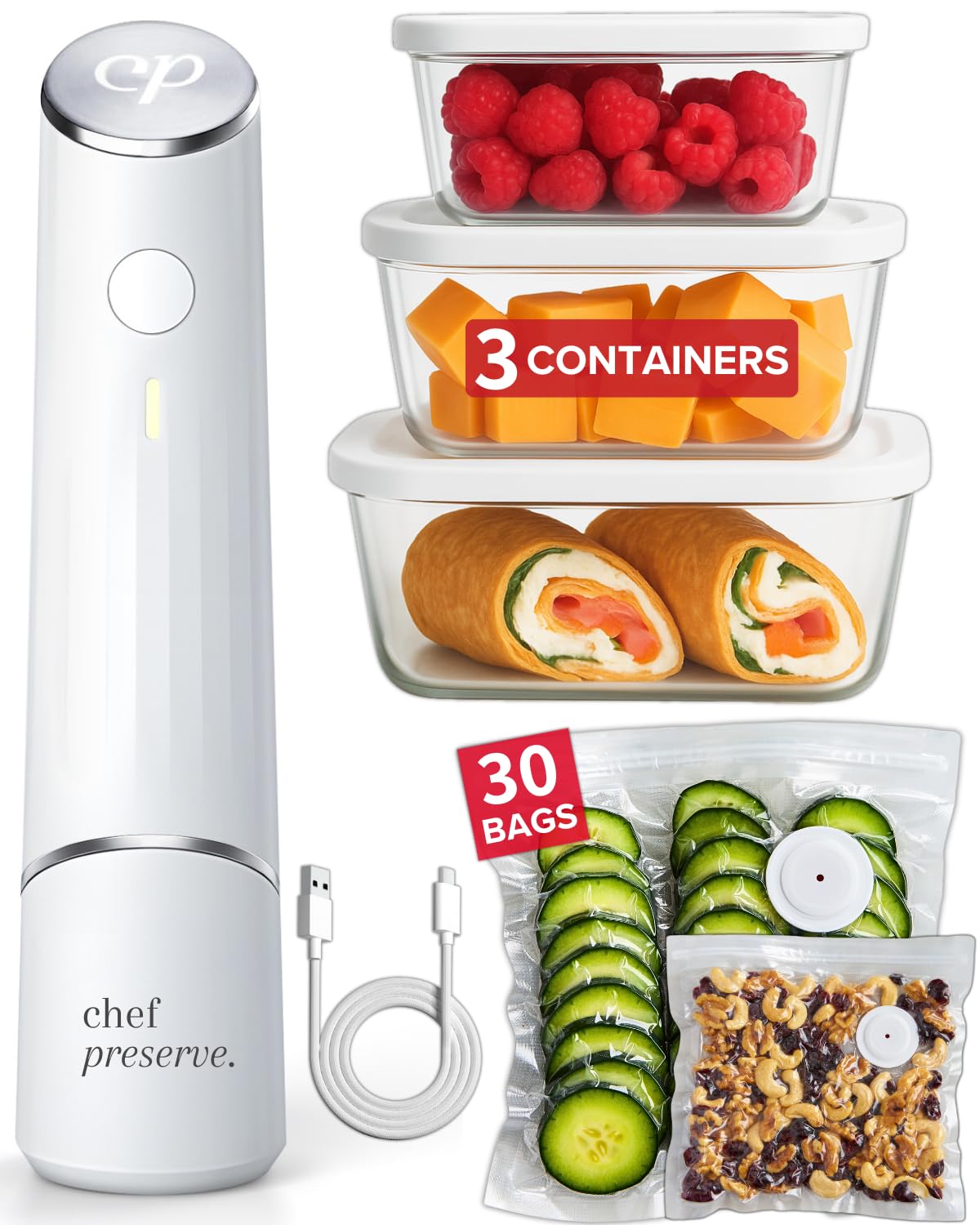Are you tired of food going bad too quickly and wasting your hard-earned money? You might have heard about vacuum sealing as a way to keep your food fresh for longer.
But does vacuum sealing really preserve food the way you expect? Understanding how this method works can save you time, reduce waste, and keep your meals tasting fresh. You’ll discover the truth about vacuum sealing and how it can change the way you store your food.
Keep reading to find out if this technique is the secret to extending your food’s shelf life.

Credit: www.amazon.com
Table of Contents
ToggleHow Vacuum Sealing Works
Vacuum sealingremoves air from bags, stopping oxygen from reaching food. This slows down spoilageand keeps food fresh longer. Without air, bacteria and mold grow slowly. It also prevents freezer burn by blocking moisture loss.
The process uses a machine to suck air out, then seals the bag tightly. This locks in flavors and nutrients. Vacuum sealing is good for meats, vegetables, fruits, and leftovers.
| Type of Vacuum Sealer | Description | Best For |
|---|---|---|
| External Vacuum Sealer | Sucks air from outside the bag, then seals it | Home use, small batches |
| Chamber Vacuum Sealer | Vacuum inside the whole chamber, seals the bag | Large batches, liquids, commercial use |
| Handheld Vacuum Sealer | Portable, removes air from special bags | Quick sealing, small items, travel |

Credit: www.amazon.com
Benefits Of Vacuum Sealing
Vacuum sealinghelps food last much longer by removing air. This slows down spoilage and stops bacteria growth.
It also prevents freezer burn. Without air, ice crystals don’t form on food, keeping it fresh and safe.
Food keeps its flavor and texturebetter too. Sealing locks in natural juices and taste, so meals stay tasty and moist.
Foods Best Suited For Vacuum Sealing
Meats and seafoodkeep fresh longer when vacuum sealed. It stops air and moisture from spoiling them. This works well for beef, chicken, fish, and shellfish. Freezing these sealed items also helps keep taste and texture.
Fruits and vegetablesstay fresh by slowing down mold and rot. Soft fruits like berries do well but need gentle sealing. Hard vegetables like carrots and broccoli keep crunchiness. Blanching vegetables before sealing can improve shelf life.
Dry goods and snackslike nuts, chips, and coffee stay crisp and tasty. Vacuum sealing stops them from going stale. It also protects against bugs and moisture. Sealed beans and grains last longer without losing flavor.
Limitations Of Vacuum Sealing
Vacuum sealing doesn’t work well with all foods. Fresh fruits and vegetables can spoil faster. They need air to stay fresh. Foods with high moisture may get damaged. Bread and similar items can get crushed.
Sealing food removes oxygen. Some bacteria grow without air. These are called anaerobic bacteria. They can spoil your food. It’s important to store sealed food properly. Keep it cold to slow bacteria growth.
Using good equipment is key. Poor quality bags can leak. This lets air in and spoils the food. Bags should be strong and durable. Check your vacuum sealer regularly. Make sure it’s working properly.
Vacuum Sealing Vs Other Preservation Methods
Vacuum sealing removes air, slowing spoilage and keeping food fresh longer than many other methods. It protects against freezer burn and moisture loss effectively. Compared to freezing or drying, vacuum sealing often preserves flavor and texture better.
Freezing Without Vacuum Sealing
Freezing food slows down bacteria and mold growth. But, air inside the bag can cause freezer burn. This leads to dry, tough, and less tasty food. Vacuum sealing removes air, helping food stay fresh longer in the freezer.
Canning And Pickling
Canning uses heat to kill bacteria and seal food in jars. It keeps food safe for months. Pickling uses vinegar or salt to stop germs. Both methods change food taste and texture. They do not need refrigeration.
Refrigeration Alone
Refrigeration slows down spoilage but does not stop it. Food lasts only a few days without vacuum sealing. Air causes food to dry out and lose flavor. Vacuum sealing plus refrigeration keeps food fresh much longer.
Tips For Effective Vacuum Sealing
Proper bag selectionis key for vacuum sealing. Use bags made for vacuum sealers only. Thick, durable bags prevent punctures and air leaks. Avoid thin or regular plastic bags as they can tear easily.
For sealing techniques, make sure the bag edge is clean and dry. Leave some space at the top for sealing. Place the bag correctly in the sealer and press firmly. Double sealing can help protect against leaks.
Storage conditionsaffect how long vacuum-sealed food lasts. Keep sealed foods in a cool, dry place or the refrigerator. Freezing extends shelf life even more. Avoid storing near heat or sunlight, which can damage the bag and food.

Credit: www.amazon.com
Frequently Asked Questions
Does Vacuum Sealing Extend Food Shelf Life?
Vacuum sealing removes air, slowing spoilage and keeping food fresh longer than normal storage.
Can Vacuum Sealing Prevent Freezer Burn?
Yes, vacuum sealing stops air contact, which helps prevent freezer burn on frozen foods.
Is Vacuum Sealing Safe For All Food Types?
Most foods are safe, but some, like soft cheeses, may need special care before sealing.
Conclusion
Vacuum sealing helps keep food fresh longer by reducing air exposure. It slows down spoilage and protects flavor and nutrients. Foods like meat, vegetables, and cheese last better when sealed tightly. Still, freezing or refrigerating sealed food adds extra safety.
Always check food quality before eating. Vacuum sealing does not stop all bacteria or mold growth. It works best as part of good food storage habits. Save money and reduce waste by sealing food properly. Simple, effective, and easy to use—vacuum sealing makes a difference.


